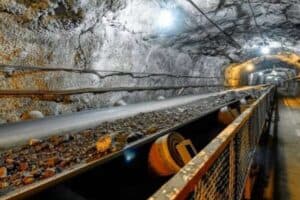In a PhD research paper conducted in Ogies, it was found that relocations continue as a result of coal mining companies buying up land owned by white farmers.

Dispossession in South Africa is associated with the period of colonialism and apartheid. As a result, not much consideration is given to how previously marginalised black communities continue to be dispossessed by coal mining activities.
In a PhD research paper conducted in Ogies, a town that lies 29km southwest of Emalahleni (Witbank) in Mpumalanga, it was found that relocations continue as a result of coal mining companies buying up land owned by white farmers.
Black farm dwellers and labour tenants are dismissed because the mining companies see houses – and graves – as movable structures and, therefore, replaceable.
Dispossession is historically thought about only in relation to land. But this framework is limited, given that relocation affects more than people’s homes. It happens to the graves of their families, too.
In my research, I refer to this as loss of the intangible – families lose their spiritual security, identity, heritage and belonging. Household and grave relocations feature as an aspect of dispossession in my work.
I traced the relocation of 120 families between 2012 and 2016 from Goedgevonden farm, Tweefontein farm and other farms in the vicinity of Ogies, 112km east of Johannesburg. Families were moved to make way for the Goedgevonden opencast colliery mine, which is owned by the global mining giant Glencore.
As part of the relocation, at least 1,000 graves were relocated from Tweefontein farm. The graves belonged to former migrant labourers and labour tenants who came from various parts of South Africa and other countries such as Mozambique and Swaziland.
Most of the deceased people’s relatives live in nearby black townships, such as Phola and Witbank, and others left a long time ago.
This meant some graves were claimed, others were not.
The study found that graves are subject to contestation because of contradictions in South Africa’s laws. On the one hand, the National Heritage Resource Act (1999) protects graves. But the South African Mineral and Petroleum Resources Development Act (2002) allows land to be used for mining purposes.
The result is that the laws undermine government’s stated objective of protecting previously marginalised communities.
Importantly, the study also found that graves are material evidence of a history that is entangled with narratives of land dispossession and restoration – even today.
Graves matter because they validate citizenship for African communities that were previously denied such status. Relocating graves for mining activities removes the material obstacles to cater to a company’s desire to make profit. For the affected families, though, the relocation erases the evidence of their historical ties to a place and, above all, disrespects their ancestors.
The relocations at Ogies left the families feeling spiritually vulnerable and disconnected from their ancestors. Mining companies have to provide heritage impact assessment reports when they apply for mining rights, in line with the Mineral and Petroleum Resources Development Act and the National Heritage Resources Act.
The reports often detail the structures which will be impacted during development.
In section 36 of the Heritage Act, graves are classified and protected according to their age and spatial location (for example, inside or outside a formal cemetery). But these measures, which are meant to reduce any possible adverse effects of mining on communities, aren’t enough.
The Minerals Act trumps the Heritage Act in most cases. This is evident in that no mining right or development has been denied because of the existence of graves on the site. Moreover, mining houses and, to some extent, heritage consultants who are hired by mines to facilitate the relocations, don’t understand people’s attachment to their homes and the sacredness attached to ancestral remains, as well as the meaning of land in African communities.
The intricate meaning was best described by an anthropology professor, Peter Geschiere. He noted that when a child is born in most African communities, their umbilical cord is buried in the soil to mark the space to which they shall be returned when they die. Essentially, the piece of land becomes sacred at birth and in death.
During interviews with families whose graves were relocated, it was evident that death only marked a disconnection with the physical body.
The interviewees believe the spirits of ancestors continue to live. They bring about good omens, but also bad luck if violated.
Hence, the relocated families complained that the treatment of their ancestral remains – such as putting them in plastic garbage bags during the relocations and using child-like coffins for the reburial – causes them and the ancestors distress.
These stories reveal a continued violation of the previously marginalised black majority. Even in death, the colonial and apartheid-era experiences remain very much a part of post-apartheid South Africa.
For more news your way, download The Citizen’s app for iOS and Android.






